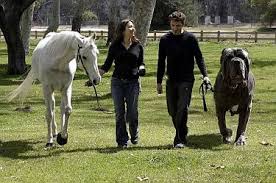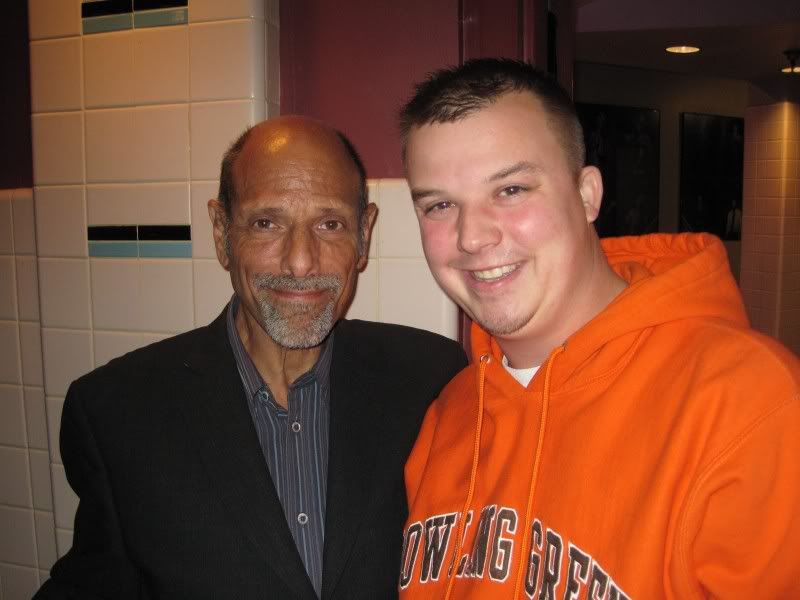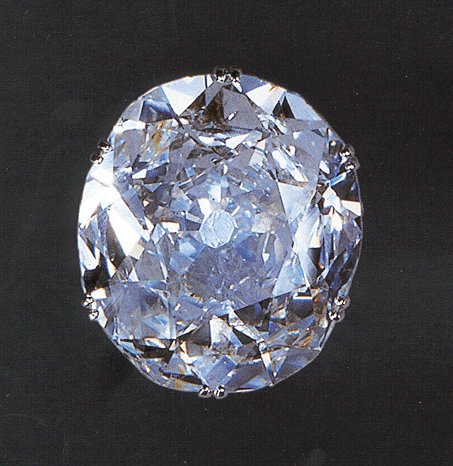
Andrea Bocelli has been called "the fourth tenor"; the blind, Tuscan-born, vocalist has emerged as one of the most exciting voices in the arena of light classical vocals and has made inroads into the world of opera as well. His participation in Pavarotti's 1992 hit Miserere album and Zucchero Fornaciari's 1993 world tour brought him international attention. Bocelli has been most successful as a pop ballad singer, having recorded duets with Celine Dion, Sarah Brightman, and Eros Ramazzotti. Al Jarreau, who sang with Bocelli during "The Night of Proms" in November 1995, praised Bocelli with these words: "I have had the honor to sing with the most beautiful voice in the world."
Bocelli grew up on farm in Lajatico, a rural village in Tuscany. Beginning piano lessons at the age of six, he later added flute and saxophone to his talents. Born with poor eyesight, he became totally blind at the age of 12 following a soccer accident. Despite his obvious musical talents, Bocelli did not consider a career in music until he had studied law at the University of Pisa and had earned a Doctor of Law degree. Inspired to pursue music, he studied with the famed tenor Franco Corelli, supporting himself by peforming in piano bars.
Bocelli's first break as a singer came in 1992 when Fornaciari auditioned tenors to record a demo tape of Miserere, which he had co-written with Bono of the Irish rock group U2. Successfully passing the audition, Bocelli recorded the tune as a duet with Pavarotti. After touring with Fornaciari in 1993, Bocelli performed as a guest star in the Pavarotti International festival held in Modena in September 1994. In addition to performing solo and in a duet with Pavarotti, Bocelli sang with Bryan Adams, Andreas Vollenweider, and Nancy Gustavsson. In November 1995, Bocelli toured Holland, Belgium, Germany, Spain, and France on the pop "Night of Proms" bill, which also featured Al Jarreau, Bryan Ferry, Roger Hodgson of Supertramp, and John Miles.
Bocelli's first two albums -- 1994's Andrea Bocelli and 1996's Bocelli -- showcased his operatic singing. His third effort, Viaggio Italiano (Italian Journey), featured famous arias and traditional songs from Naples. Although released only in Italy, the album sold more than 300,000 copies. With his fourth album, Romanza, released in 1997, Bocelli turned to pop music. The album included the hit "Time To Say Goodbye," recorded as a duet with Sarah Brightman. Bocelli continued to focus on pop balladry with his fifth album, Sogno, released in 1999, which featured a duet with Celine Dion on the David Foster and Carole Bayer Sager-penned tune, "The Prayer"; it sold more than ten million copies, received a Golden Globe award and led to Bocelli being nominated for a Grammy as best new artist.
The early 2000s saw Bocelli making an attempt to win credibility in the world of mainstream opera, touring in a series of operatic appearances and releasing the album Verdi and taking lead roles in recorded versions of Tosca, La bohème, and Il trovatore. Some opera fans pointed to deficiencies in his partially microphone-formed technique, while others lauded his ability to bring new audiences to opera. Neither the admirers nor the detractors could ignore the sheer charisma that drew ordinary listeners to this genuine, unassuming vocal star.
 Andrea Bocelli
Andrea Bocelli  Andrea Bocelli
Andrea Bocelli  Andrea Bocelli
Andrea Bocelli  Andrea Bocelli
Andrea Bocelli

 In addition to the main common stair, the second Owner’s stair connects to the third level aft private salon and deck / water feature. The third level also contains the forward pilothouse and separate captain’s quarters. The generous open decks with separate water features are located forward and aft for convenient guest use. Specifications and plans are in the final stages of completion and will be posted at a later time.
In addition to the main common stair, the second Owner’s stair connects to the third level aft private salon and deck / water feature. The third level also contains the forward pilothouse and separate captain’s quarters. The generous open decks with separate water features are located forward and aft for convenient guest use. Specifications and plans are in the final stages of completion and will be posted at a later time.
































